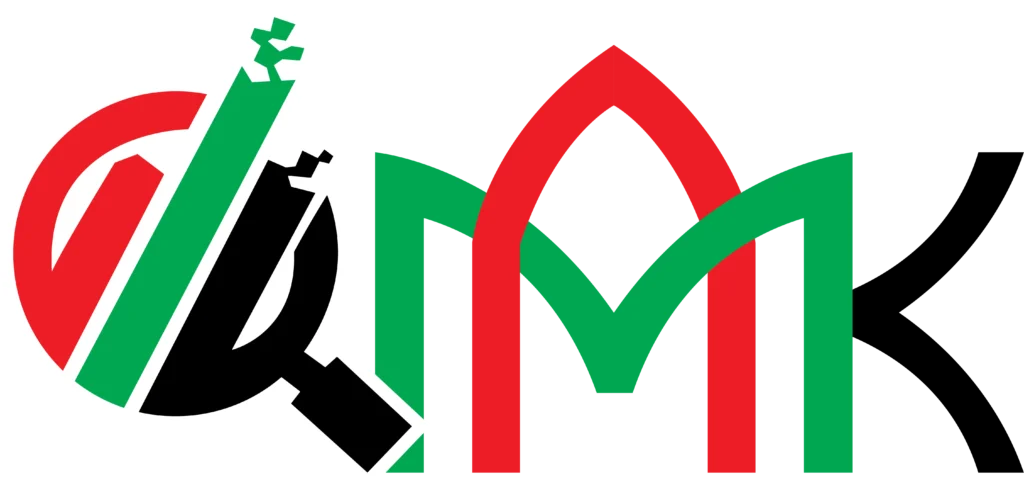Taxable Income in UAE Corporate Tax: A Practical Guide
The United Arab Emirates adopted corporate tax in June 2023. The system supports fair growth across sectors. The law gives a clear frame for profit measurement. The regime also keeps the country attractive for new ventures.
This guide explains taxable income under corporate tax in simple words. The guide helps a finance team prepare clean records. The guide also helps an owner make better decisions with data.
How the Regime Works at a Glance
The government sets a threshold for small profits. The government then applies a single rate above that level. Free zone entities sit inside the regime with special rules. Large multinational groups may later face a separate top-up approach.
Your team should start from accounting profit. Your team should then adjust that profit for tax. The result becomes taxable income. The authority expects strong books with IFRS discipline.
Fast facts you can use:
- 0% on the first AED 375,000 of taxable profit.
- 9% on taxable profit above AED 375,000.
- Qualifying free zone income can sit at 0%, subject to strict tests.
- Non-qualifying free zone income sits at 9%.
- Interest deduction cap ties to AED 12 million or 30% of tax-adjusted EBITDA, with carryforward for 10 years.
What “Taxable Income” Means in Practice
Taxable income means the profit after specific tax adjustments. Your accountant starts with the profit in the income statement. The accountant then removes exempt items. The accountant adds back non-deductible costs. The accountant also applies loss-relief rules, interest limits, and other tests.
This process creates a fair base for the rate. The base follows Articles commonly referred to for exempt income, deductions, and timing items in the UAE CT framework.
Main building blocks:
- Revenue streams: Your company earns money from core operations and side activities.
- Allowable deductions: The law permits normal and necessary business costs.
- Exempt income items: Some receipts do not face tax under the regime.
- Adjustments: Unrealised gains, related-party pricing, and foreign branch results may need changes.
Clear mapping reduces disputes, and clear notes improve audit readiness.
From Accounting Profit to Taxable Income: Step by Step
Step 1 — Gather the books.
Your team prepares financial statements under IFRS. The numbers must reflect real performance for the period.
Step 2 — Find the net profit.
You locate the bottom-line figure. The figure shows revenue minus expenses for the tax year.
Step 3 — Identify exempt income.
Your team lists receipts that the law treats as exempt. Your team removes those from the base.
Step 4 — Add back non-deductible costs.
You add back fines, private spending, or costs outside business needs. You also check entertainment limits and donation rules.
Step 5 — Apply the interest-limitation rule.
You compare net interest with the AED 12m safe harbor or 30% of tax-adjusted EBITDA. You carry excess forward for up to 10 years.
Step 6 — Factor tax losses.
You carry eligible losses forward. You offset up to 75% of taxable income in a later year. You keep ownership continuity to use those losses.
Step 7 — Arrive at taxable income.
You confirm the adjusted amount. You document every step with schedules.
Step 8 — Apply the rate.
You apply 0% up to AED 375,000. You apply 9% above that line. You compute the payable tax and plan the payment.
Rates and Thresholds with Context
- Small business threshold: The first AED 375,000 encourages early growth.
- Standard rate: The 9% rate supports competitiveness in the region.
- Free zones: A Qualifying Free Zone Person may enjoy 0% on qualifying income. The person must meet substance tests, keep clean books, avoid excluded activities, and manage related-party rules. Non-qualifying income attracts 9%.
- Large groups: The country plans rules in line with OECD Pillar Two for groups with revenue above AED 3.15b. Details depend on future regulations.
Example to Make It Clear
Company A reports AED 500,000 taxable profit after all adjustments.
- First AED 375,000 → 0%.
- Remaining AED 125,000 → 9% = AED 11,250.
Tax payable = AED 11,250.
If losses exist, the company may offset up to 75% of the base for the year, subject to rules.
Typical Adjustments You Should Track
1) Non-deductible items.
- Government penalties and late fees.
- Private or shareholder expenses.
- Costs not linked to business activity.
2) Exempt or excluded income.
- Specific dividends under conditions.
- Qualifying foreign permanent establishment results, if elected and eligible.
3) Timing differences.
- Unrealised fair-value gains may not align with tax timing.
- Depreciation rates for tax may differ from accounting.
- Intangible assets may follow special rules.
4) Related-party pricing.
- The law expects arm’s-length outcomes.
- You prepare transfer pricing files where thresholds apply.
5) Foreign branch or cross-border items.
- You test treaty outcomes and domestic rules before you include or exclude.
Documentation That Protects You
Your records should cover the full story. Your files should link each line in the return to a workpaper. Your team should keep:
- Trial balance with mapping to tax lines.
- Ledgers for revenue, payroll, and cost centers.
- Schedules for interest tests and loss-utilisation.
- Contracts that support related-party pricing.
- Board minutes for material elections and policy choices.
The authority can ask for proof for seven years. Strong files save time during queries.
Special Focus: Free Zone Entities
A free zone company can hold a 0% outcome on qualifying income. The company must meet economic substance in the zone. The company must avoid excluded activities listed by rule. The company must keep clear separation between qualifying and non-qualifying streams.
Transactions with mainland parties need careful review. Income from excluded activities or non-qualifying sources attracts 9%. A simple matrix in your ERP can tag each invoice line by status. Clean tagging avoids re-work at year-end.
Interest Deduction: How to Apply the Cap
You compute tax-adjusted EBITDA. You compare net interest with the higher of:
- AED 12,000,000, or
- 30% of tax-adjusted EBITDA.
You deduct up to the cap. You park the rest in a carryforward bucket for 10 years. You track utilisation by year to avoid expiry. This step protects the base and reduces audit risk.
Loss Relief Without Surprises
Losses help smooth cash flow across years. The regime allows carryforward with limits.
- You offset up to 75% of taxable income in a later year.
- Ownership continuity rules apply.
- Group transfers and reorganisations may allow neutral treatment when conditions exist.
You should model loss usage early. You then shape pricing, dividends, and capital calls with that model.
Common Pain Points and How to Fix Them
- Weak mapping from books to tax: Build a chart of accounts that tags tax lines.
- Late interest calculations: Lock a monthly interest-test worksheet.
- Unclear free zone status: Document substance, staffing, and premises each quarter.
- Transfer pricing gaps: Draft a basic Local File and risk assessment early.
- Currency noise: Fix monthly revaluation policies and evidence.
Quick fixes that work:
- Create a monthly “tax pack” close.
- Automate add-backs with ERP rules.
- Train cost center leads on what counts as non-deductible.
- Use dashboards to track the AED 375,000 threshold in real time.
Short Checklist Before You File
- Reconcile accounting profit to taxable income.
- Reconfirm exempt items with support.
- Refresh interest-limit math and carryforwards.
- Validate loss-relief conditions and caps.
- Review free zone income tags and exclusions.
- Prepare notes for any estimates or judgments.
- Keep a sign-off trail from finance and management.
Short Case Example: Clean Method, Clean Outcome
Case: A trading company in Dubai holds IFRS books. The company adds back fines and private costs of AED 20,000. The company removes exempt receipts of AED 30,000. The company tests interest and stays within the AED 12m safe harbor.
Result: The adjusted base drops by AED 10,000 from the add-backs and exemptions net. The team files on time with a tight paper trail. The audit later goes fast because the files match each line.
Governance That Builds Confidence
Good governance reduces cost. A clear tax policy tells staff how to code spend. A quarterly tax committee reviews risk. A year-end memo explains judgments.
The market respects mature controls. Banks respond better to firms with reliable filings. Investors like stable cash flow and low penalty risk.
Technology That Makes It Easy
Modern ERPs post modifiers to entries. They tag costs as deductible or not. They route approvals by value and category.
Dashboards show the live run-rate against the AED 375,000 threshold. Alerts warn the CFO when free zone income looks non-qualifying. Simple rules in systems create strong compliance at low cost.
In Short: What Finance Teams Should Do Now
- Map the book-to-tax reconciliation.
- Train staff on non-deductible costs with examples.
- Build an interest-limit calculator.
- Segment free zone income by status in your ledger.
- Document loss pools and continuity.
- Lock a filing calendar with owner names and due dates.
What We Can Help (Mubarak Al Ketbi (MAK) Auditing)
Mubarak Al Ketbi (MAK) Auditing supports tax compliance from start to finish. Our specialists review your books with care. Our team builds a clear reconciliation from accounting profit to taxable income. Our experts set interest-limit models. Our advisers tag free zone income correctly. Our approach saves time and reduces risk.
Related Posts:
We also train your finance staff with simple playbooks. We design dashboards that flag add-backs early. We align transfer pricing with arm’s-length terms. We help you plan loss usage with clean evidence. We guide you during authority queries with strong notes.
When you act early with us, you avoid late headaches—because, as the idiom goes, “a stitch in time saves nine.”
For more information (visit or contact)
- Address: Saraya Avenue Building – Office M-06, Block/A, Al Garhoud – Dubai – United Arab Emirates
- Phone/WhatsApp: +971 50 276 2132
- Geo Coordinates: 25.2807189480206, 55.41846458517048













